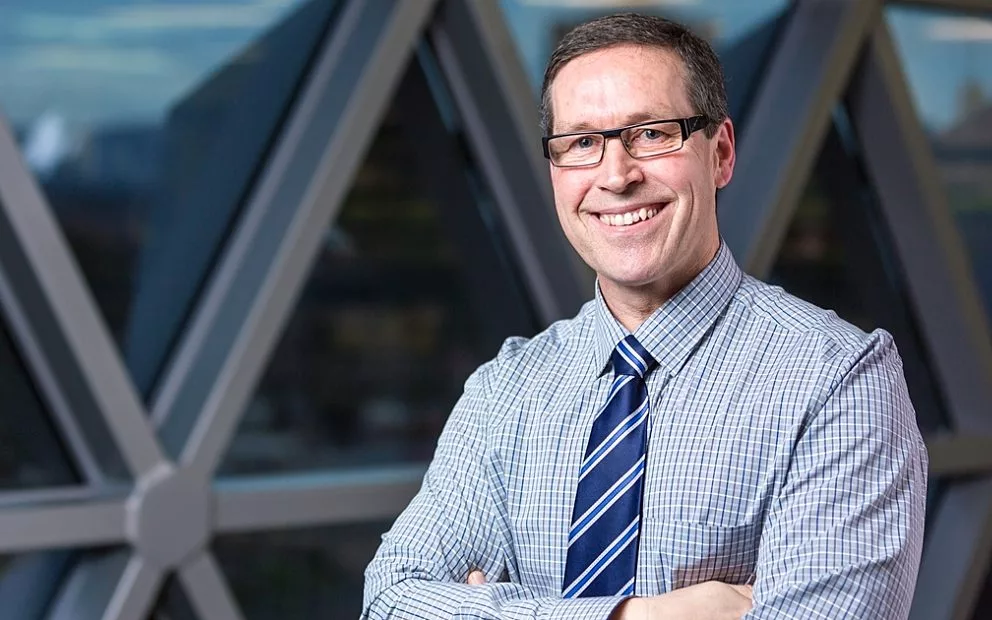A cutting edge research project designed to revolutionise the diagnosis and treatment of spinal cord injury was launched in Adelaide on Monday, 11 May 2015.
Public and private sector support is being sought to raise $1 million for Project Discovery – a collaboration between the Neil Sachse Foundation (NSF) and the South Australian Health and Medical Research Institute (SAHMRI).
“The benefits of this breakthrough research are profoundly important to those who suffer a spinal cord injury across Australia and the world,” says NSF founder, Neil Sachse.
“Funded appropriately, Project Discovery has the potential to change the lives of people injured through sport, motor vehicle accidents, or accidents in the home, workplace or elsewhere.”
Mr Sachse, who sustained a career-ending spinal cord injury during an AFL (formerly VFL) football match 40 years ago, has called on government, the corporate sector and sporting codes to provide financial support to enable the research to be undertaken.
He says the $1 million fundraising target will ensure the research is completed and new approaches to diagnosis and treatment are available globally by 2020.
Project Discovery will be based within SAHMRI’s Mind & Brain Theme. Theme Leader, Professor Julio Licinio, is strongly supportive of the innovative project aimed at ultimately delivering world-leading technology that offers a more accurate assessment of those suffering spinal cord injury.
“This ground-breaking research will ensure anyone who suffers a spinal cord injury has access to imaging services to differentiate areas of intact neuronal function from those of nerve loss, supporting early diagnosis and treatment,” says Professor Licinio.
“It is anticipated the technology delivered by Project Discovery will identify areas of intact nerve, leading to much better measurement of a patient’s response to treatment - and allowing physicians to identify preferred treatments more swiftly than they are currently able to,” he says.
Prab Takhar, Director of the Molecular Imaging and Therapy Research Unit at SAHMRI, says SAHMRI will develop a compound that will provide information regarding nerve cell viability and recovery to help better understand and treat spinal cord injury.
“Looking inside the nerve cell will allow researchers and clinicians to view spinal injury in a revolutionary new way,” says Mr Takhar.
The outcomes provided by Project Discovery will greatly reduce the frustration caused by diagnostic delays and have an enormous and positive impact on the lives of those suffering spinal cord injuries, according to Mr Sachse.
“This project has the potential to change thousands of lives each year. It is yet another example of South Australia taking the lead in devising and delivering global-first research,” he says.
Neil Sachse Foundation
Established in 1995, the Neil Sachse Foundation is a not for profit organisation created to raise funds to support research into the treatment of spinal cord injury.
Originally known as the Spinal Research Fund of Australia Incorporated, NSF believes that research and education are the ultimate keys to making lives better for those affected by spinal cord injury, including their caregivers, family, friends and colleagues.
South Australian Health and Medical Research Institute (SAHMRI)
As a new entity, SAHMRI will significantly increase Australia’s capacity for leading scientific research by building a team of more than 600 top researchers in a world-class precinct of medical research and clinical application, state-of-the-art laboratories, and a purpose-built, iconic, 25,000 square-metre facility adjacent to the new Royal Adelaide Hospital.
SAHMRI’s vision is to transform research into health. Teams at SAHMRI will aim to fundamentally improve the quality of life for all people, through innovative, world-class and ground-breaking health and medical research.
As South Australia’s flagship research facility, SAHMRI will provide a clear focal point for health and medical research in the state. SAHMRI will be a vibrant, globally-recognised institute that harnesses dynamic collaborations to deliver tangible health outcomes and community impacts.
SAHMRI’s research will focus on seven key areas that are of critical importance to the health and wellbeing of our community:
Aboriginal Health
Cancer
Healthy Mothers, Babies and Children
Heart Health
Infection and Immunity
Mind and Brain
Nutrition and Metabolism.
For further information
Hazel S Jourdin
Head of Philanthropy & Strategic Engagement, SAHMRI 0415 196 191


